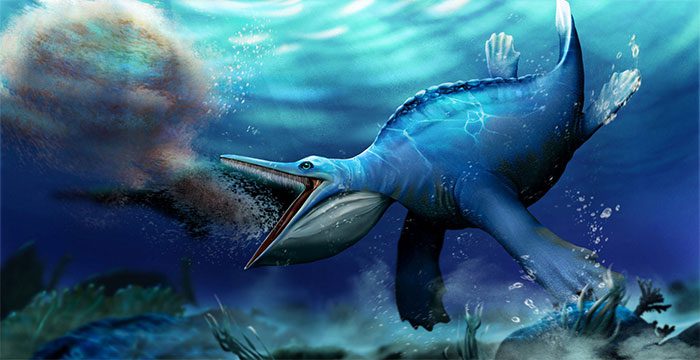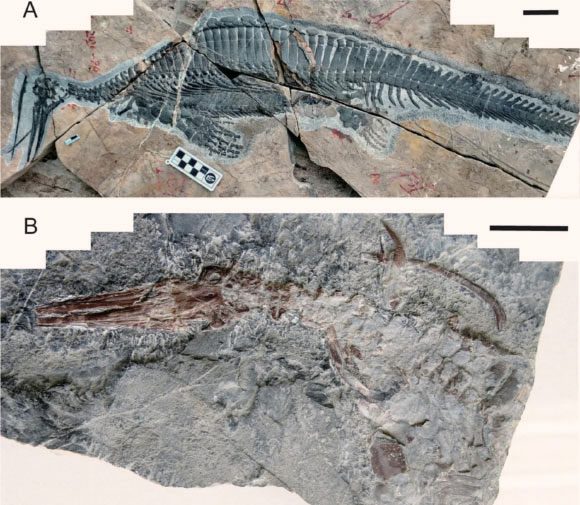This aquatic monster belongs to the Hupehsuchian group, a distinct lineage of marine reptiles from China, closely related to ichthyosaurs. New research reveals that it also bears a strange resemblance to a modern creature.
With a terrifyingly dense set of teeth, a snout resembling that of a pelican, a body like that of a dinosaur, but limbs similar to fins – this is the “portrait” that scientists have reconstructed from the fossil of Hupehsuchus nanchangensis, a marine reptile from the Triassic period excavated in Hubei Province.

The appearance of the aquatic monster excavated in Hubei, China – (Photo: BMC Ecology and Evolution).
New research led by Dr. Zichen Fang, a paleontologist from the China Geological Survey, and Professor Michael Benton from the University of Bristol (UK) examined two specimens of Hupehsuchus nanchangensis collected from the Jialingjiang Formation in Hubei Province, including one nearly intact specimen.
The specimens date back approximately 248 million years and belong to a larger group of marine reptiles known as Hupehsuchians.

Excavated fossils of the Hupehsuchian aquatic monster – (Photo: BMC Ecology and Evolution).
“Hupehsuchians are a unique group in China, closely related to ichthyosaurs and known for about 50 years, but their way of life is still not fully understood”, Dr. Fang stated.
This aquatic monster belongs to a chaotic period, just 3 million years after the mass extinction event of the Permian period, ushering in a new Triassic period with significant changes in Earth’s biosphere, including the emergence of dinosaurs.
Thus, this aquatic monster in China is a species at a pivotal evolutionary junction, holding immense value that could reveal the origins of many evolutionary traits.
The study recently published in the scientific journal BMC Ecology and Evolution uncovered the most fascinating aspect: it was a filter feeder, a trait found in whales and some modern marine organisms, but previously unknown in Triassic marine reptiles.
This is clearly evidenced by its jaw structure, which features many small, sharp teeth capable of forming a perfect filtering mesh. The method is slightly different from modern whales, but essentially the feeding style is similar.
This discovery was made possible by the complete skull excavated from a more recent specimen, illustrating both the snout and jaw structure that allowed their mouths to expand like a pelican’s while swimming forward and gulping down small prey.
“It is astounding to discover how quickly these large marine reptiles appeared and completely transformed the marine ecosystem of that time”, Professor Benton remarked, as reported by Sci-News.




















































